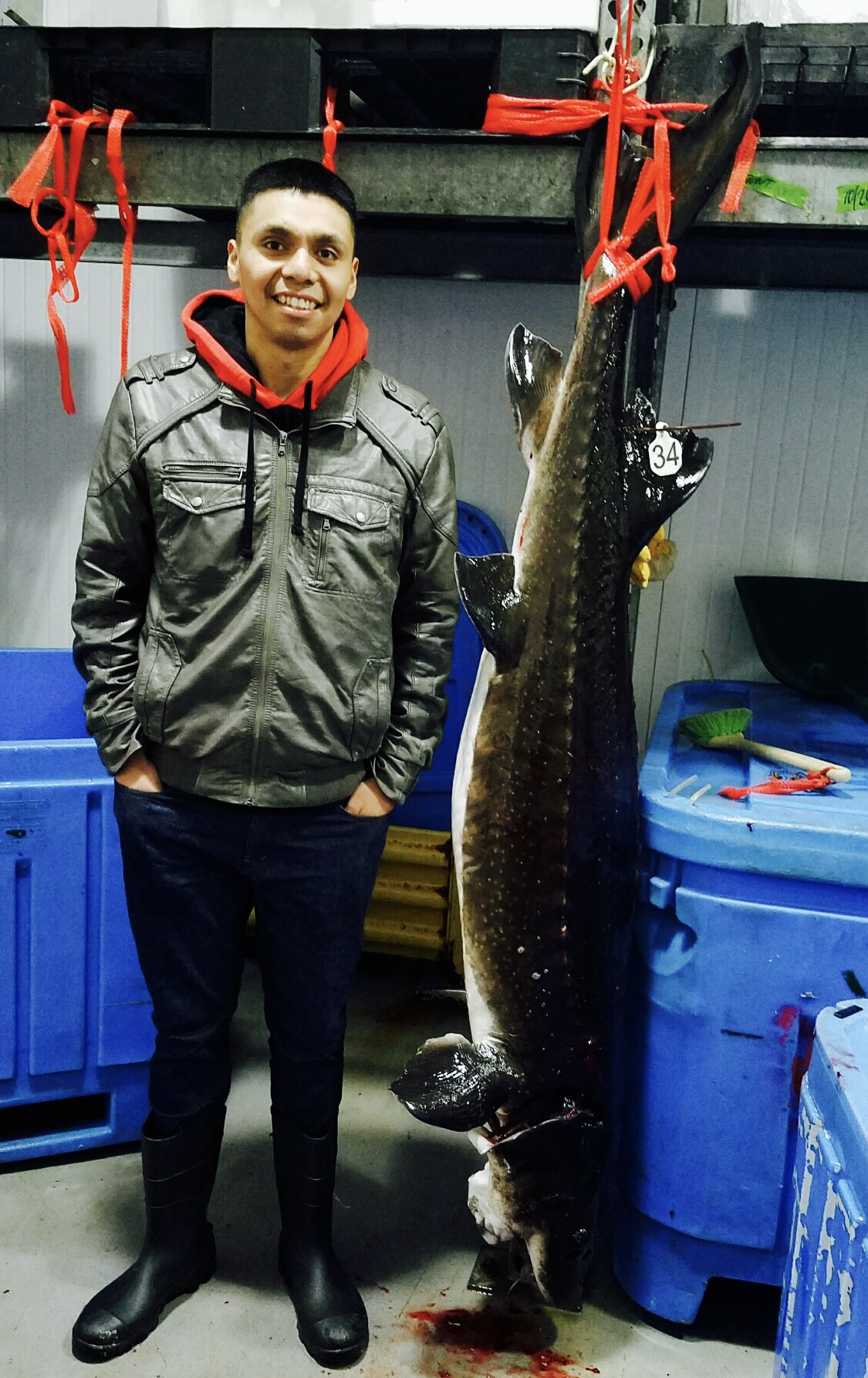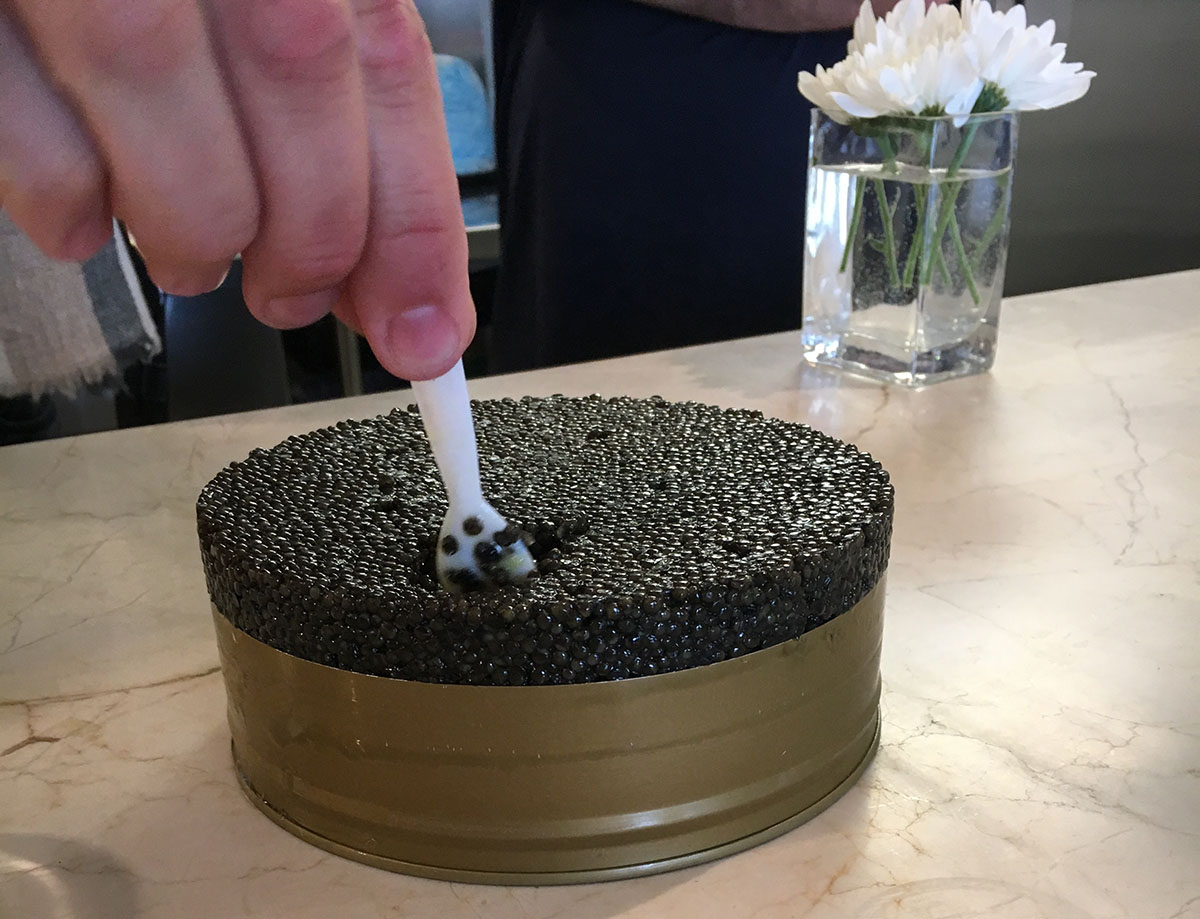Curing Caviar from Water to Table at The Commissary
Executive Chef Rogelio Garcia of The Commissary restaurant in the Presidio of San Francisco is no stranger to cooking with caviar.

The Commissary Executive Chef Rogelio Garcia with the sturgeon from which he harvested eggs for caviar
In December 2016, he invited three guest chefs and California Caviar Company founder Deborah Keane to join him in preparing a four-course caviar-focused dinner as part of his Open Kitchen series. (Held on the first Monday of the month, a different seasonal ingredient forms the foundation of a prix-fixe menu created by local and visiting culinary luminaries.) This particular Open Kitchen dinner sparked a deeper exploration into the process of curing caviar, when Deborah invited Rogelio to make his own caviar for The Commissary.
Rogelio joined a group of local chefs at San Francisco’s Pier 45, where fishing boats from fish purveyor Water 2 Table were just arriving with fresh-caught sturgeon. Each chef selected his or her own fish, and began the process of harvesting caviar eggs. Rogelio chose a 200-pound sturgeon, which he drained, cleaned, and harvested in a process that took two hours. The sturgeon yielded 15 pounds of dark-blue eggs. Rogelio noted that the color and size of caviar eggs varied by fish, with some fish’s eggs taking on a black color and larger size.
After the chefs had successfully harvested their eggs, they traveled to California Caviar Company’s headquarters across the Golden Gate Bridge in Sausalito, where the
eggs were rinsed and passed through a strainer to remove extraneous tissue. Each chef placed the eggs in a bowl with salt and a small amount of saline solution to reduce bacteria and begin the curing process.
Rogelio hand-packed his caviar into tins, which had to be flipped every 24 hours to ensure even curing. After one week, he returned to Sausalito to taste his freshly cured caviar. He learned that caviar is ready to be served as early as one week after packing, but can cure for up to a year, which increases its intensity and saltiness. Once the tins are open, exposure to air breaks down the caviar, so it’s best eaten when at its freshest (no more than four weeks after opening).

Rogelio’s hand-packed caviar for curing
The Commissary’s house-made caviar has been gracing dishes of more recent Open Kitchen dinners, such as a spring pea–focused dinner in which Rogelio created a dish of American sturgeon topped with English peas, trumpet mushrooms, and his freshly cured caviar. The caviar turned out “firm and beautiful, not mushy or musky,” he said.
Now that he has the basics under his belt, Rogelio is excited to apply what he’s learned and begin to experiment with different approaches and flavors. “There are so many different salts you could use. I’ve seen some chefs cure it for a couple days and smoke it in banana leaves or grill it, which gives the caviar a smoky flavor,” he said. “You can manipulate every step of a traditional caviar by using different salts or infusions.” Lucky guests at The Commissary are sure to enjoy what he comes up with!